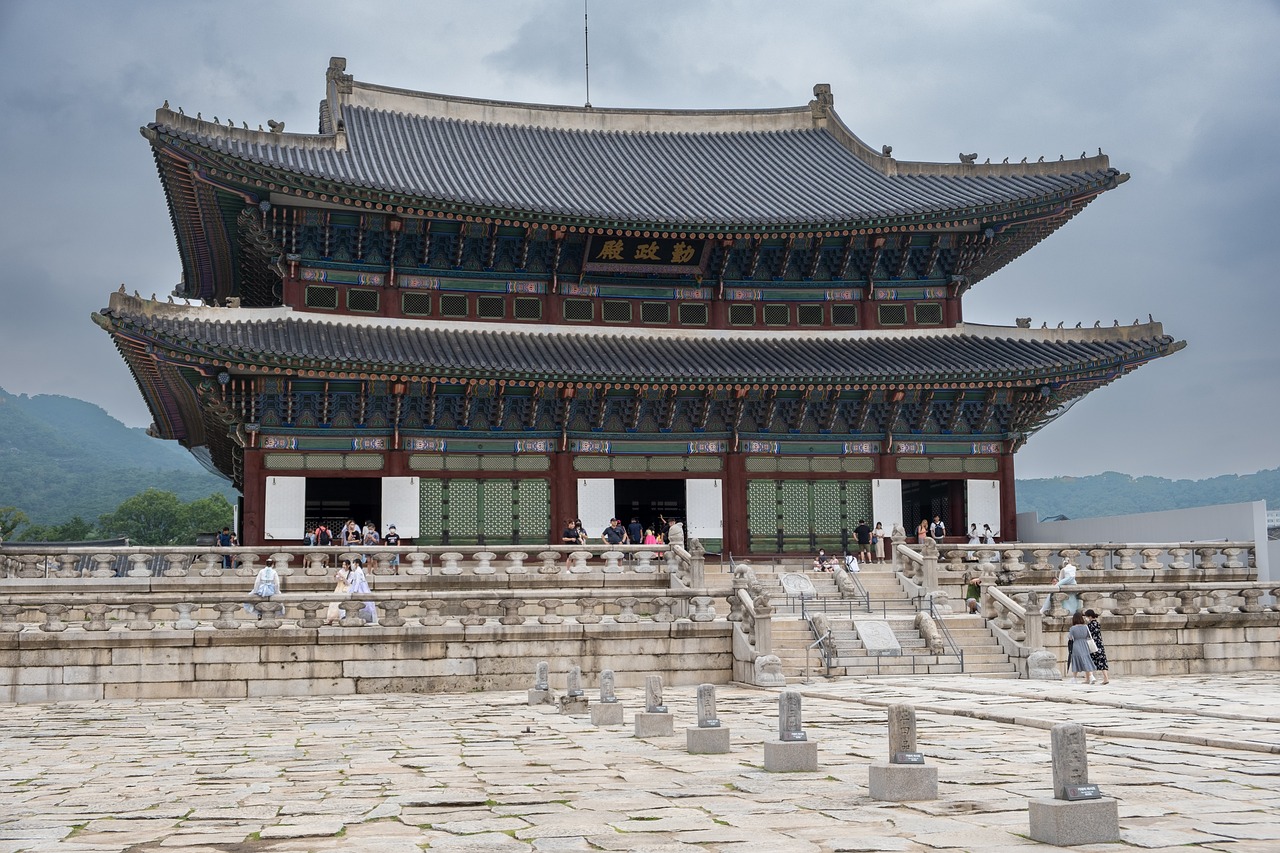
Discover Korea's Royal Heart
Nestled in the heart of Seoul, Gyeongbokgung Palace is more than just a historical site — it's a living symbol of Korea's heritage and pride. Built in 1395 during the Joseon Dynasty, it served as the main royal palace for centuries. Its name, meaning "Palace Greatly Blessed by Heaven," perfectly reflects its grandeur and importance.

A Glimpse into Korean History
Gyeongbokgung was the first and largest of the Five Grand Palaces built by the Joseon Dynasty. Despite being destroyed during the Japanese invasions and later during Japanese colonial rule, the palace has been meticulously restored. Walking through its majestic gates, you'll find yourself surrounded by traditional architecture, tranquil courtyards, and cultural richness that dates back over 600 years.
Don't miss the iconic Gwanghwamun Gate, the main gate of the palace, and Geunjeongjeon Hall, where kings once held court. The National Palace Museum of Korea and the National Folk Museum, both located within the palace grounds, offer deeper insights into Korean royal culture.
How to Get There
Getting to Gyeongbokgung is easy with Seoul’s efficient public transport:

Subway:
Take Line 3 (Orange Line) to Gyeongbokgung Station, Exit 5. The palace is right in front of the exit.
Alternatively, take Line 5 to Gwanghwamun Station, Exit 2, and walk for about 10 minutes.
Bus:
Several bus routes stop near the palace. Look for buses heading to Gwanghwamun or Gyeongbokgung on navigation apps like Naver Map or KakaoMap.
Tip: Visit early in the morning to avoid crowds, especially on weekends.
Wear Hanbok and Enter for Free
One of the most unique experiences in Seoul is wearing hanbok, the traditional Korean outfit. When you wear a hanbok, you can enter Gyeongbokgung for free! Rental shops are located just outside the palace entrance and offer various styles for both men and women.
Wearing hanbok not only gives you free admission, but also allows you to take stunning photos that look like you stepped back in time.
Things to Do Nearby
Gyeongbokgung is surrounded by other must-visit attractions:
Bukchon Hanok Village:
Just a 10-minute walk away, this village features traditional Korean houses where people still live. A great place for scenic walks and photography.
Insadong Street:
Known for traditional tea houses, street food, and handmade souvenirs.
Gwanghwamun Square:
Home to statues of King Sejong and Admiral Yi Sun-sin, offering a great view of the palace and the city.
Cheonggyecheon Stream:
A peaceful 11-km urban stream perfect for a relaxing walk, especially at night when it’s beautifully lit.
Tips for Your Visit
Admission: 3,000 KRW for adults (Free with hanbok)
Opening Hours: 9 AM – 6 PM (Closed Tuesdays)
Guided Tours: English tours are available for free at scheduled times
Photography: Tripods are allowed, but drones are not
Final Thoughts
Gyeongbokgung Palace is not just a tourist spot; it’s a journey through Korean culture, tradition, and resilience. Whether you're a history enthusiast, a culture lover, or just looking for beautiful places in Seoul, this royal site is an absolute must-see.
So, don your hanbok, step through the palace gates, and let Gyeongbokgung’s majestic charm sweep you into the past.
#Hashtags
#Gyeongbokgung • #SeoulTravel • #KoreanPalace • #VisitKorea • #HanbokExperience • #ThingsToDoInSeoul • #KoreanHistory • #TravelAsia • #CulturalHeritage • #BackpackingKorea
'korea > Life in Korea' 카테고리의 다른 글
| 화창한 일요일 도심 워킹 (0) | 2025.05.25 |
|---|---|
| Why Do Koreans Slurp Their Noodles? The Cultural Secret Behind the Sound (0) | 2025.05.18 |
| "Why Every First-Time Visitor to Busan Should Visit Jagalchi Market" (1) | 2025.05.16 |
| Daebyeon Port: The Hidden Birthplace of Korea’s Anchovy Sauce Culture (1) | 2025.05.15 |
| What Is “Sugure Gukbap”? Discover Korea’s Hidden Soul Food (1) | 2025.05.12 |